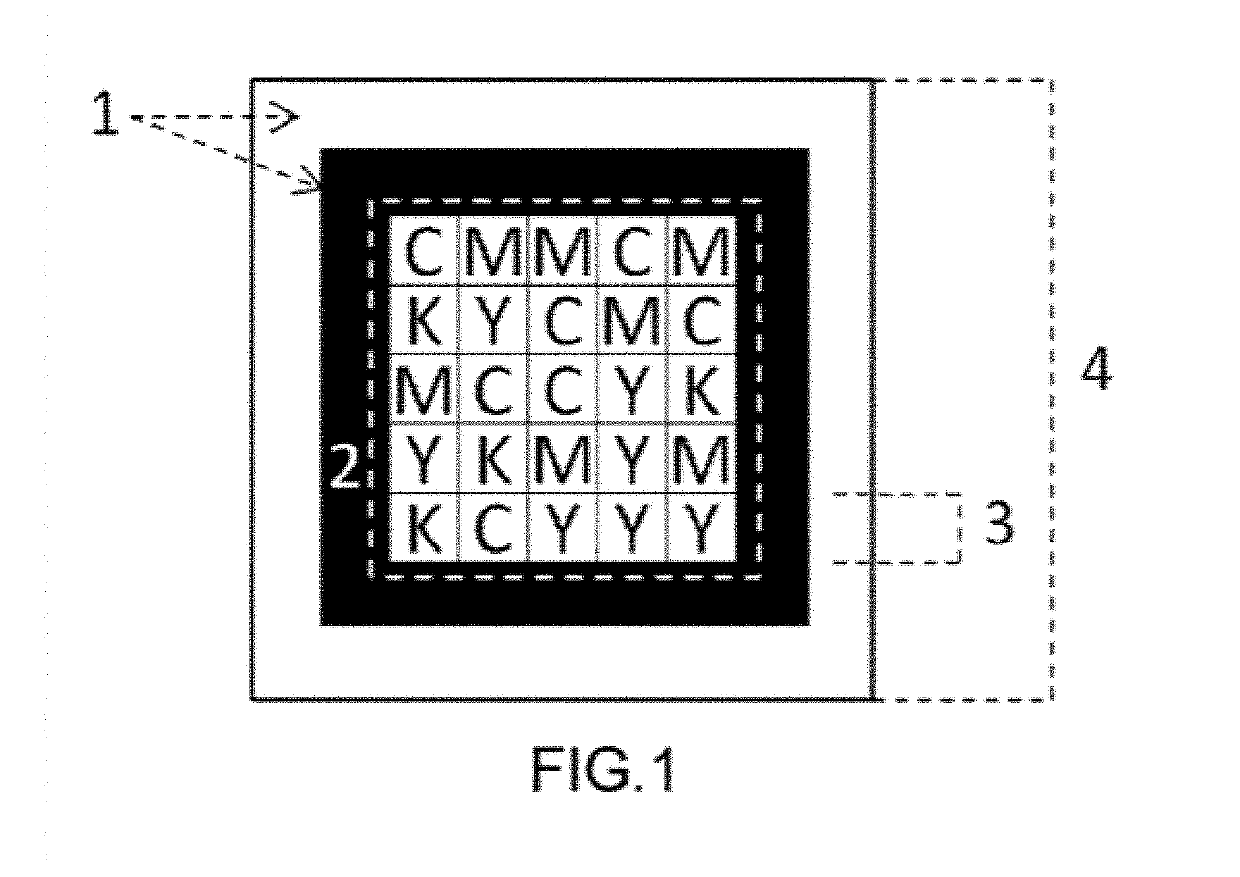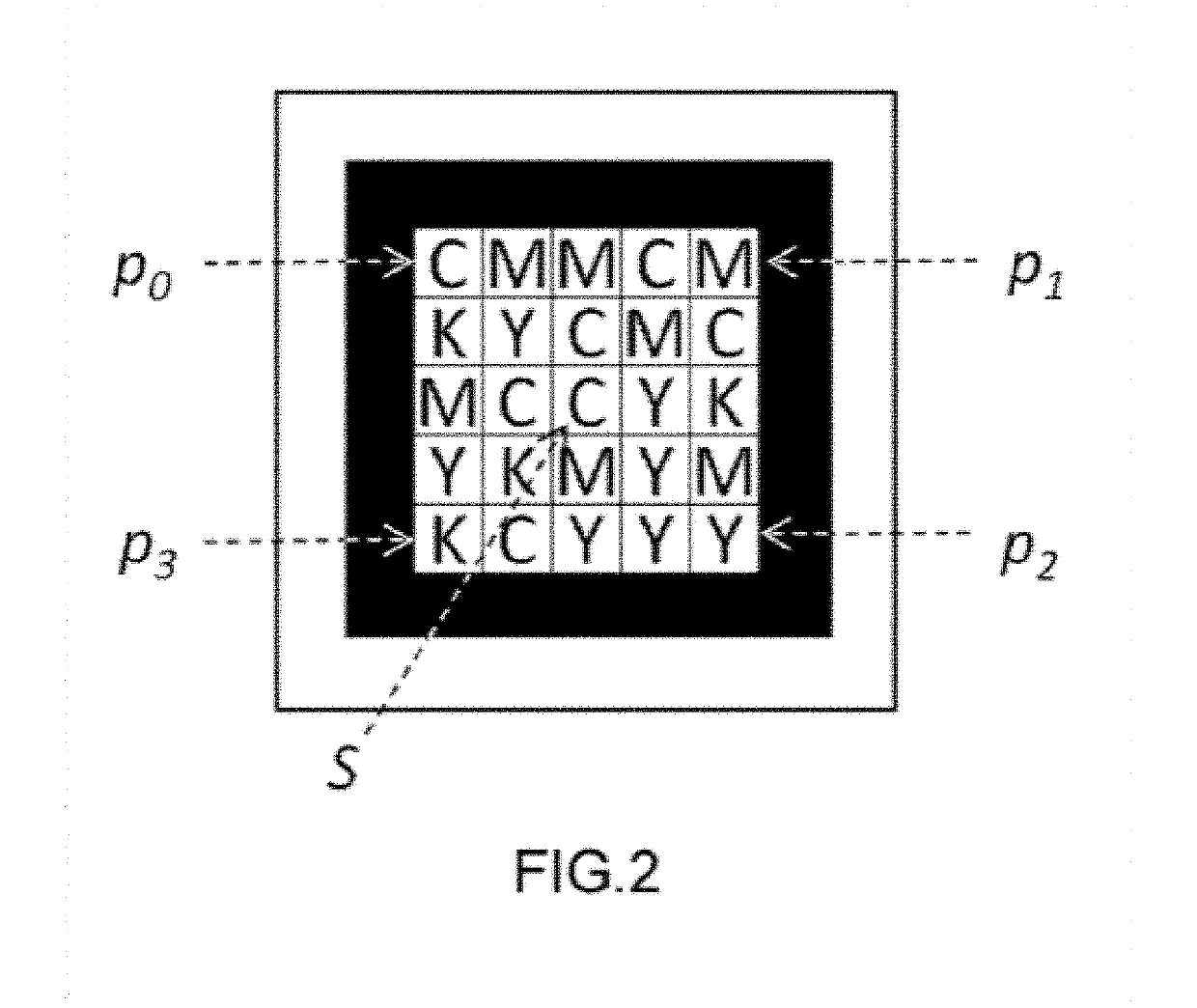Method for detecting and recognizing long-range high-density visual markers
a high-density, visual marker technology, applied in the direction of redundant data error correction, fault response, instruments, etc., can solve the problems of poor lighting of the area, inconvenient capture of markers from long distances or in unfavourable optic conditions, and greater difficulties
- Summary
- Abstract
- Description
- Claims
- Application Information
AI Technical Summary
Benefits of technology
Problems solved by technology
Method used
Image
Examples
example 1
f the Method
[0064]To assure the correct operation of the markers and the detection method proposed in the present invention, a functional prototype has been developed which consists of two applications: a marker generator and detector. Both applications have been developed in C++ in the high-performance cross-platform programming environment Qt SDK (http: / www.qt-project.org).
[0065]The generator manages a marker database with the information of each marker (marker code, text associated with the marker, real print size, etc.) and allows to create, remove, search for, and print these markers with the selected physical size.
[0066]Furthermore, the detector is in charge of detecting the markers on the images obtained from the camera of the device. In this case, it has been developed both for Android and iOS devices. When a marker is detected, the system queries its code in the database and vocalises (using Text To Speech) its content. Furthermore, it also vocalises the real distance at wh...
PUM
 Login to View More
Login to View More Abstract
Description
Claims
Application Information
 Login to View More
Login to View More - R&D
- Intellectual Property
- Life Sciences
- Materials
- Tech Scout
- Unparalleled Data Quality
- Higher Quality Content
- 60% Fewer Hallucinations
Browse by: Latest US Patents, China's latest patents, Technical Efficacy Thesaurus, Application Domain, Technology Topic, Popular Technical Reports.
© 2025 PatSnap. All rights reserved.Legal|Privacy policy|Modern Slavery Act Transparency Statement|Sitemap|About US| Contact US: help@patsnap.com



